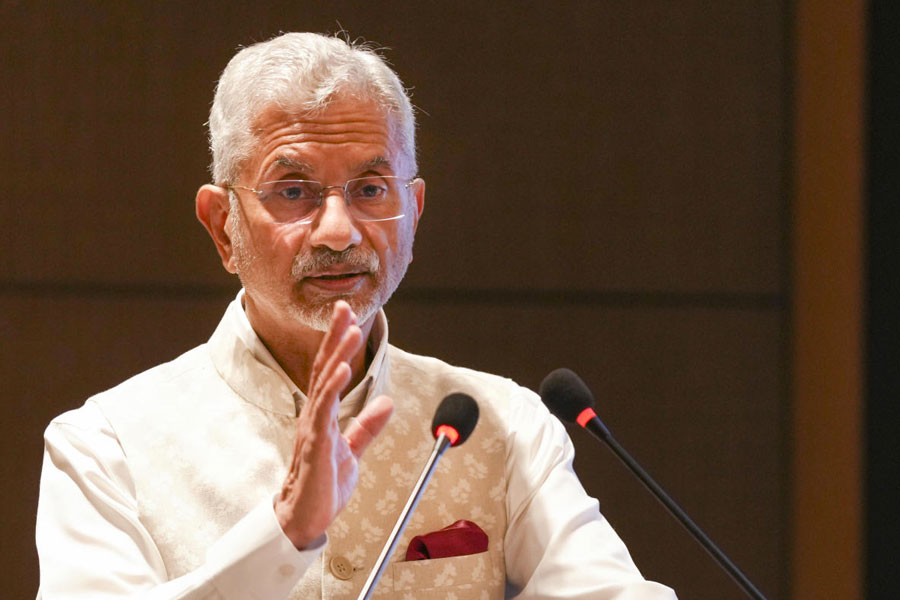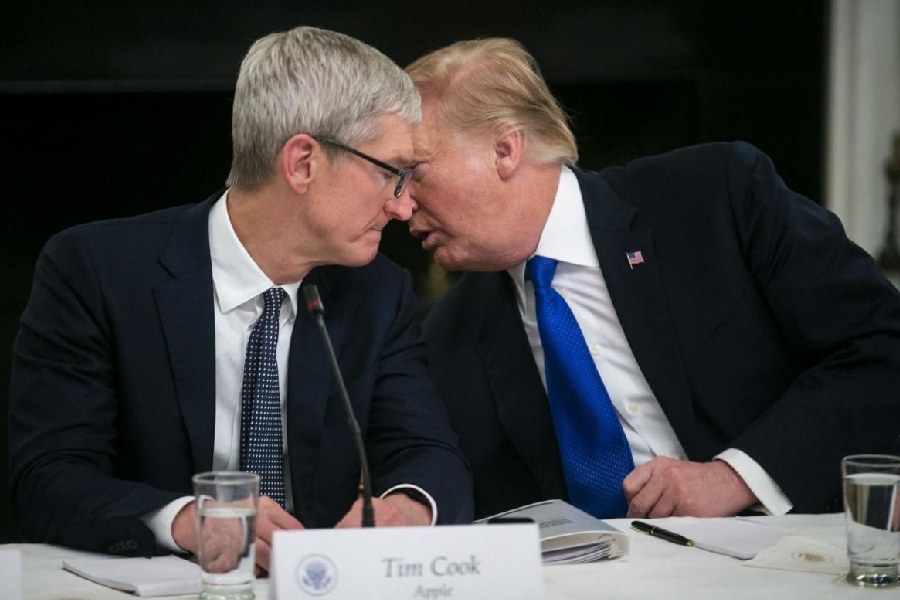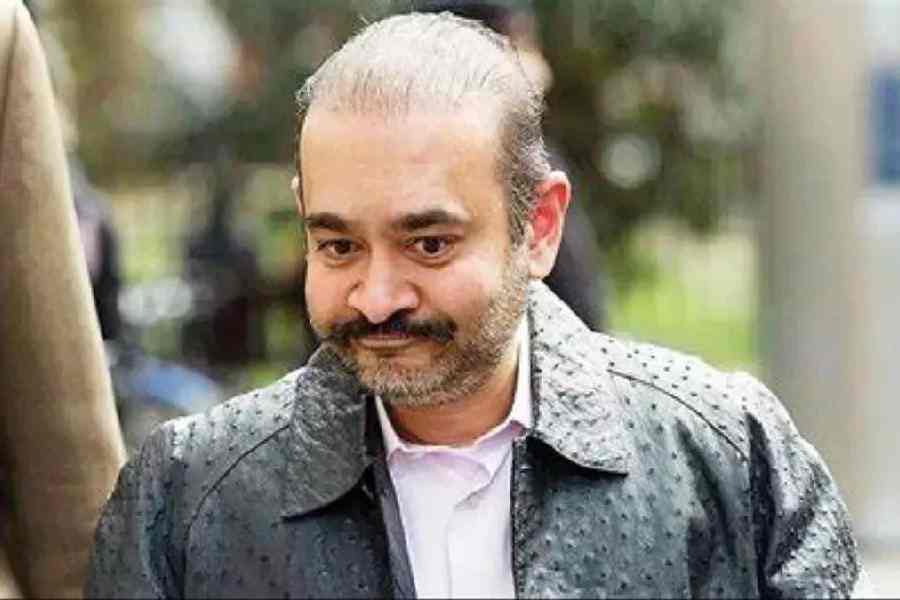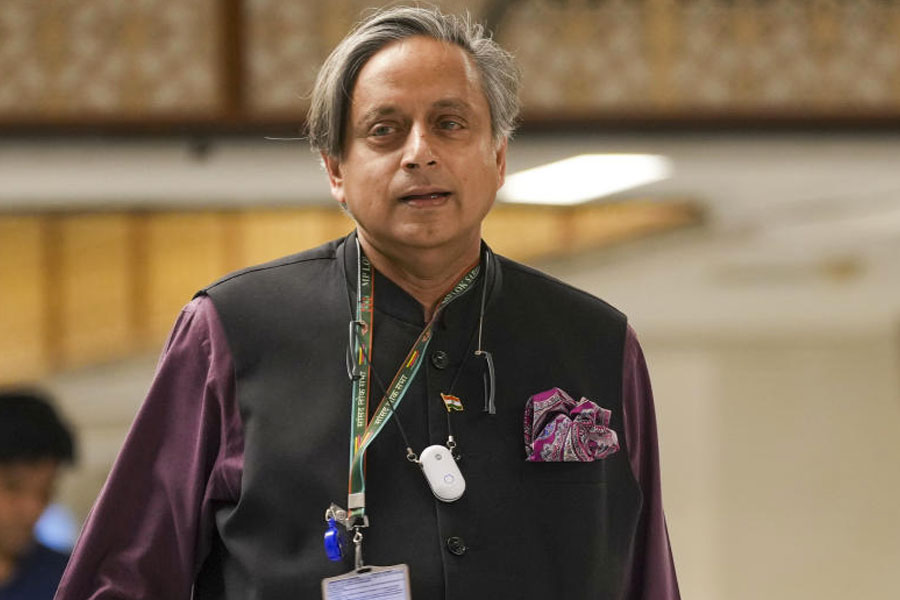 |
| Victor Banerjee in action during the shooting of Bow Barracks Forever. Picture by Aranya Sen |
Off-screen images: Moon Moon Sen shouting to residents three floors up to send her a pair of slippers she needs for the shooting, and the women obliging with a smile. Victor Banerjee practically camping in the home of an old Chinese lady, addicted to her home-cooked momos. Anjan Dutt reading out his script to the residents to get their approval. Local boys lending a helping hand, whether it be to ferry props to the terrace or keep the curious crowds at bay…
Perhaps a touch unconventional when it comes to making a film, even in Calcutta. But there’s nothing conventional about the film being shot in the Bow Barracks, dilapidated but teeming with life. The on-screen tale of the Anglo-Indian community in the Cinemawalla production Bow Barracks Forever is told through Emily Lobo and her son Bradley. But it is the colourful characters around them that bring the story to life.
While not all of them are savoury, most strike a chord with the residents of Bow Barracks. To enlist their support, director Dutt had invited the residents to a script-reading session. From that moment on, they became a part of the process, some on camera, some off it. But it is the fact that in the film they all fight together to retain their homes in the Barracks, despite the designs of a land-grabbing promoter, that appeals most to the inhabitants of the 144 homes.
Barry Saviel, resident of Bow Barracks and a schoolteacher, is a “sidekick” of Peter the Cheater, played by Victor, in the film. “The people were initially resistant, because they weren’t sure how they would be portrayed. But after the script-reading, most of them are okay. To be honest, not many of us watch Hindi or Bengali films. So this will be appreciated, since it is being made in English,” he says.
“I am happy with the film,” Mervyn Saviel flashes a toothless smile. “I think it will gain world prominence, because people from our community are all over the world. In fact, I called my friends and relatives in the UK and told them about the film. They were all very excited. I even sent a brochure to one of them, and it will be passed around.”
Uncle Ron and his wife ‘mother’ Teresa are two other old stalwarts of the Barracks. Ron says he plonks himself on the verandah, in his chair, and gets a “ringside view” of the shooting. “Now I know what an arduous task the making of a movie is,” he laughs. “I didn’t know anything before. But the cast and crew keep telling us how organised we are.”
Victor, for one, terms this “my most memorable shoot in Calcutta” and chooses to park himself in the Barracks from long before his first shot to long after his last, “just to soak in a way of life that could soon be lost forever”.
Uncle Ron admits that it is not the first film to be made on the Anglo-Indian community (“I know about 36 Chowringhee Lane”), but this is the first time he’s going to make sure he sees the movie. “At the end, in the film, they get to keep the Barracks, so I like it…” he trails off, echoing the sentiments of so many others, living with the constant fear of eviction from their beloved Bow Barracks.
— Nisha Lahiri
She was only 17 when she crossed the courtyard of her home in Hyderabad and subsequently, the Atlantic, to travel to the US for higher studies. For Anees Jung, that was an eye-opener. Speaking at the launch of her sixth book, Beyond the Courtyard: A Sequel to Unveiling India, published by Penguin India, at Oxford Bookstore, Jung etched out little vignettes from her life as a writer and columnist.
“I was a very quiet, private child,” Jung remembers. “America opened the doors and made me talk. I returned to India with a very different perspective, talking more. I just write the way I talk and the way I talk is what I am.”
Her childhood and adolescence spent in the Nizam’s Hyderabad and the literary ambience of her home also left a lasting mark on her life and works. Always on the move, Jung travelled about 50,000 km in India before writing Unveiling India, a poignant look at the women of this country, in 1987.
Film-maker Mrinal Sen recounts how Jung came over to Bhuj to join his Bhuvan Shome unit in 1968. She also visited war zones like Bosnia and Palestine, besides venturing into other “forbidden territory” like the Guruvayur temple in Kerala and the Jagannath temple in Puri.
“Hinduism was like a fragrance around me earlier,” Jung says. “It changed my way of life. When I wrote Unveiling India, I had rainbows in my eyes. But the sequel, 15 years later, is a sadder book. Religion threatens me now, after Babri Masjid and Gujarat. And the India I loved and grew up in is being taken away from me.”
Beyond the Courtyard, priced at Rs 250, is “about the daughters of the mothers in Unveiling India”. “What has changed over the years is that women in India are perhaps more aware of their rights… They have begun to talk.” But she admits being “very suspicious of this awareness”. For, the contemporary Indian woman “is an opaque mass that has given up one identity before finding another”.
— Mohua Mitra
 |
| Football star Bhaichung Bhutia checks out the items on display at The Society Collection exhibition, at Netaji Indoor Stadium. One of the biggest arts, crafts and artefacts exhibitions in India, it is on till Sunday. Picture by Pabitra Das |
There’s no getting away from it — this is the time for technology, and computers rule. Keeping that in mind, Priya cinema has taken another step forward to make going to the movies simpler.
“Multiplexes are going in for the computerised system, but we are the first in the country to bring it into single-screen halls,” says Arijit Dutta, owner of the Deshapriya Park cinema. “We had to customise it for our use. The whole thing, hardware plus software, cost us about Rs 8 to Rs 9 lakh, but in the future it will save on manpower.”
The system, which should be up and running by January 20, and fully functional by 23, has been under trial for the past month, and “working well”. Essentially, when a customer seeks a seat, the computer makes the instant booking by day, show and number.
“Also, when we buy raw material, we enter it into the computer which then keeps a record and lets us know in advance that we are about to run out. This upgrade will save us a lot of back-office work, help restructure and reshuffle manpower in the future and reduce logistical headaches,” adds the president of the Eastern India Motion Pictures Association.
“When the people get used to the new way things work at the booking counter and popcorn and cold drink stands, we will extend the system to other areas, like shops,” adds Dutta.
Here are a few goings-on around town this weekend, for family entertainment:
All you Bosco fathers out there, grab your cricket gear and make your way to the Don Bosco Daddy Cricket Tournament for the P.C. Chandra Cup, on the school grounds on Sunday, from 8 am.
A classical Oddisi dance programme has been lined up on Sunday, with performances by Romi, Samhita, Sanjukta and Subhosree, disciples of Guru Giridhari Nayak, at Gyan Manch, at 6.15 pm. There will also be a choreographed presentation, entitled Vande Shivam Shankaram.
If you need to keep the kids occupied this weekend, take them to sit and draw and flower arrangement competitions at Bengal Rowing Club, on Sunday, at 10 am. Or pause at the Eden Gardens for Flower Fair ’04, hosted by the government.
For home improvements, drop in at Mi Casa and browse through a furniture and home accessories exhibition, at Crescent Towers, 229, AJC Bose Road.










